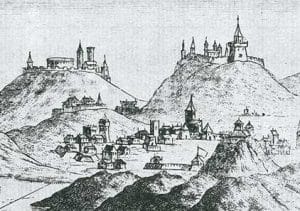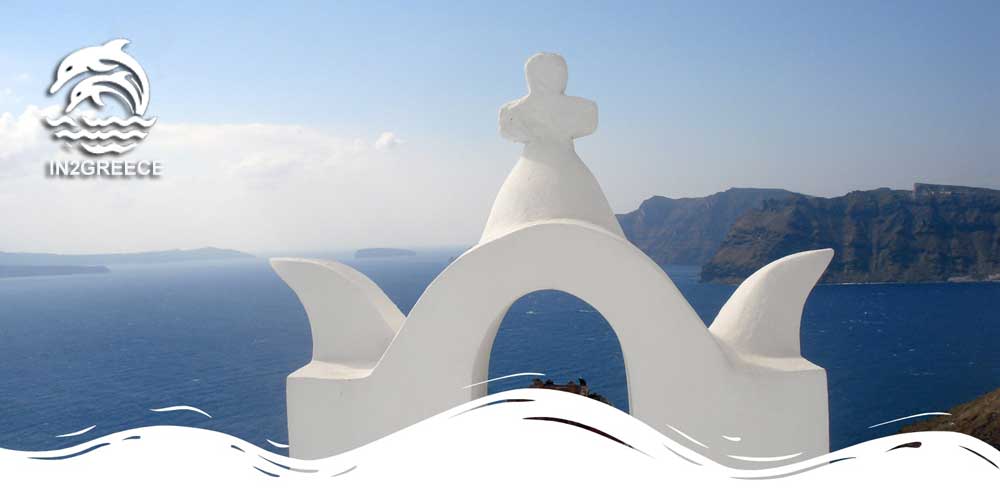History of Skiathos

According to the historical sources, the Pelasgians are mentioned as the first inhabitants of Skiathos. The Carians, the Cretans, the Mycenaeans and the Chalcidians from neighboring Evia followed.
Archaic years
In the 7th century the Halkidians, in one of their campaigns to establish colonies in Halkidiki, conquered the island and built a fortified city in the southeast of the port with a wall they built from huge marble stones and was protected from enemy raids.
Neoclassical years
During the Persian Wars, Skiathos helped the Greeks, in the battle of Artemisium – 480 BC – it is said that they warned the Greeks with torches about the descent of the Persians, and participated in the First Athenian Alliance to better deal with the Persian threat.
The victory of the Spartans in the Peloponnesian War (404 BC) brings Skiathos under their influence and the government becomes oligarchic.
With the peace of Andalkidion, in 386 BC, Skiathos becomes independent but only for a short time since the Spartans return after a while. In 378 BC with the establishment of the Second Athenian Alliance, Skiathos sides with Athens, flourishes and even mints its own copper coins.
The island then became a naval base for the Athenians for their operations against Philip II of Macedonia, while in 338 BC after the dominance of the Macedonians, Skiathos came under their rule. After the death of Alexander the Great, the island changed its sovereignty several times.
Hellenistic years
During the Second Macedonian War, in 200 BC, Philip gives the order to destroy both Skiathos and Skopelos in order not to fall into the opposing camp. Skiathos was then plundered by the Roman fleet and the fleet of Attalus I of Pergamum.
Although the destruction of the island was enormous, he managed relatively quickly to restore the damages and in 197 BC. the democratic government also returned. With the dissolution of the Macedonian state in 168 BC. the whole of Greece was enslaved by the Romans.
Roman & early Byzantine years
In 42 BC, after the battle of Philippi, Antonius, in order to thank the Athenians for their attitude, gave them Skiathos. Thus, for the next few years, the island lives peacefully and with democracy.
There is not much information about the first Byzantine period in Skiathos, but it is known that it belonged to the province of Thessaly and was part of the Macedonian theme. Christianity came to the island in 325 AD. and in 530 AD the first church, Agia Triada, was built. In 758 AD in the port of Skiathos the Byzantine fleet was anchored, which helped Thessaloniki when the Slavs and Bulgarians attacked them.
Frankish rule & Venetian rule
In the 8th century, Skiathos lived through a dark period with the frequent raids of the Saracens on the island and the entire Aegean. In 1204, the Byzantine Empire was overthrown by the Franks and the Aegean islands were given to the Venetians. Specifically, the brothers Andreas and Jeremiah Gizi, Venetian businessmen, occupy the island.
They give self-government and privileges to the Skiathians, while they build a new castle in the large port, called Bourtzi, for their residence and for the security of the city. The Gizi brothers and their successors remained on the island until 1276 when the Byzantine fleet expelled them from the Sporades.
Byzantine period & Second Venetian period
Skiathos remained in the Byzantine state until 1453 but the rule of Constantinople was rather formal since due to the frequent raids in the Aegean, the Byzantine capital was unable to consolidate its rule. Thus, in the middle of the 14th century, the inhabitants abandoned the coastal city and settled in the northern part of the island in a steep rock natural fortress, which they built.
With the fall of Constantinople, the Skiathites choose and request Venetian sovereignty as protection against the Turks and with the assurance that the privileges given to the island by the Gizi will apply and the seat of the Orthodox bishop will be preserved. Thus, the period of the Second Venetian rule begins on the island, only now things are very different from the first period with terrible oppression of the local population.
Turkish rule & 3rd Venetian rule
Despite the dominance of the Venetians, the island continues to be subject to pirate raids and in 1538 the terrible Aegean pirate Barbarossa arrives at the Castle of Skiathos, who besieges the island for 6 days and captures it. Turkish rule begins in Skiathos, although officially this is done in 1540 when the Venetian-Turkish peace was signed.
In 1576 Skiathos and Skopelos had 1 bishop, 50-70 priests and 2,000 houses. In 1660 the Venetian admiral Francis Morozinis occupies the Castle and restores the Venetian rule for the third time. The Turks, however, return very soon, continuing their rule on the island until the start of the Greek revolution.
Pre-revolutionary years and Greek revolution
The people of Skiathos carry on trade by traveling as far as Egypt and the North African coast and the Black Sea. In 1770 they take part in the naval battle of Chesme alongside the Russian admiral Alexios Orlof. The pre-revolutionary movement of the armatoli and thieves of Olympus after the Orlof movement continues in Skiathos and Skopelos from 1806 to 1816. They had 12 ships with 144 sailors and 48 cannons, which they offered to Lambros Katsonis, while participating in raids against Turkish ships.
Under the guidance of the mayor Alexandros Logothetis, the great-grandfather of Papadiamantis and also the Skiathite teacher of the genus Epiphanios Dimitriadis, they officially enter the fight in the Revolution. In fact, it is typical that the first Greek flag with a white cross on a blue background was created in 1807 in the Holy Monastery of the Annunciation of the Virgin.
In 1822 the Turks made a last attempt to retake it but were decimated. In 1829, the protocol of the “Independence of Greece” was signed in London by which the Greek state was established and the Demon Islands, i.e. Skiathos, Skopelos, Alonissos and the surrounding deserts, were included in the borders of free Greece.
Early 19th century and German occupation
In 1845 the population of the city has increased significantly and from 1500 inhabitants, now they exceed 2000 and in 1855 the city’s zoning begins. In 1851, Alexandros Papadiamantis, one of the most important Greek writers, also known as “the saint of Greek letters”, was born in Skiathos.
In 1919, Greek Asians from the village of Agia Paraskevi Cesme in Asia Minor found refuge in Skiathos due to the persecutions by the Turks, but when they learned that the Turkish violence had stopped, they gradually returned to Asia Minor. After the Asia Minor Disaster of 1922, the same families settled permanently on the island, enriching it populationally, culturally and economically.
During the 2nd World War the country of Skiathos was almost completely destroyed by the German air force. On September 14, 1943, the Germans sank the submarine “Katsonis” with V. Lasko and his heroic crew, 7 miles from the castle in the north of Skiathos. Every year in Skiathos, in Katsonia, a memorial service is held for the victims of the shipwreck.
In 1944 shortly before the liberation of Greece from the Germans, the Nazis burned the island and executed nine Skiatians in retaliation, because the resistance captured the German naval commander of the Northern Sporades.
Modern Times
After the post-war period, the island of Skiathos developed very rapidly economically and socially with hundreds of thousands of visitors from abroad and Greece. In the early 1970s, the airport was built, which gave an even greater boom to the island’s economy.
